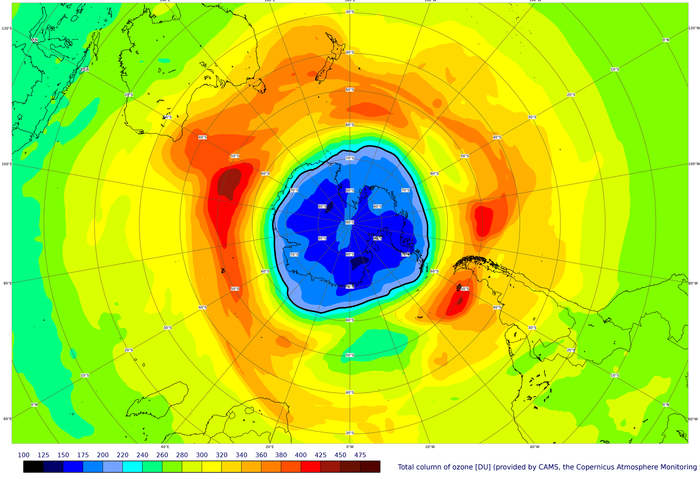The ozone hole this year has reached an extension greater than that of Antarctica, one of the largest and deepest in recent years: this is shown by the observations of the Sentinel 5P satellite, one of the Earth sentinels of the Copernicus program managed by the Commission European and European Space Agency (ESA). The data was collected as part of the Copernicus Atmosphere Monitoring Service (Cams) of the European Center for Medium Range Weather Forecasts. The figure comes to us on the occasion of the International Day for the oreservation of the ozone layer, which is celebrated today.
The hole in the ozone layer forms every year during the austral spring, between August and October, and reaches its maximum between mid-September and mid-October. This year, after a fairly normal initial condition, it increased dramatically last week and is now 75% larger than the measurements taken at this same time of year since 1979.
"Although similar to that of 2020, this year the ozone hole has turned into one of the longest ever recorded," observes Vincent-Henri Peuch, director of the Copernicus Atmosphere Monitoring Service. For Antje Inness, of the European Center for Medium Range Meteorological Forecasts, "the monitoring of the ozone hole at the South Pole must be interpreted with caution, since the size, duration and concentrations are influenced by local winds. However, we expect it to be. close by 2050 ".
With the end of the southern hemisphere spring season, as temperatures in the upper stratosphere begin to rise, ozone depletion slows, the polar vortex weakens and eventually breaks down.bringing ozone levels to normal by December.











